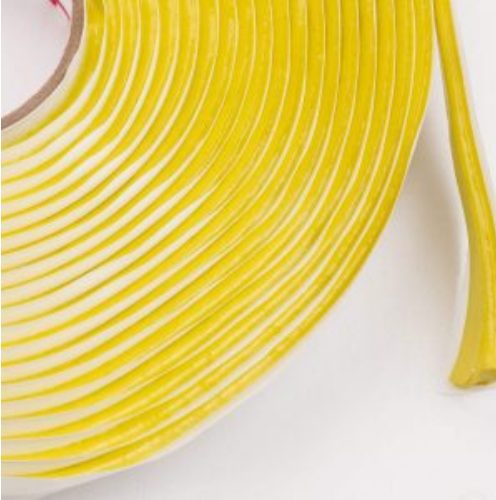 Vacuum Bag Sealant is a mastic tape sealant for airtight seals between vacuum bags and molds. Easy to work around difficult angles, patching small leaks in the vacuum system.
Vacuum Bag Sealant is a mastic tape sealant for airtight seals between vacuum bags and molds. Easy to work around difficult angles, patching small leaks in the vacuum system.
883 Vacuum Bag Sealant, ½” wide x 25 ft roll
What is Vacuum Bagging?
Vacuum bagging is when a composite that is laid up and wet out by hand is then put under vacuum to compact the laminate and force out excess epoxy. Vacuum bagging has been a choice method of manufacturing and repairing composites for a long time.
Why vacuum bag a laminate?
The process of vacuum bagging allows for the ease of hand lamination while producing a part that has better properties because of its compaction. Vacuum bagging a laminate removes air voids and increases the fiber-to-epoxy ratio. All in all, it is a great process to improve your composite laminate.
How to apply vacuum bag sealant tape
Lay down a layer of sealant tape around the perimeter of the part that you intend to vacuum bag, leaving some space between it and the laminate. The area where the tape is put down should be clean and free of epoxy residue and stray fibers. Sealant tape is also commonly referred to as tacky tape or mastic sealant.
Pleating the Vacuum Bag Film with Sealant Tape
Where there is a corner or bend in the part, put a pleat in the bag. This is a fold that sticks up and allows the vacuum bag to move and conform nicely to the part under vacuum.
Without pleats, you may get bridging or cause a tear in the bag. Bridging occurs when the bag does not fold down completely on an edge and makes the edge more rounded (it will look like a filleted edge). This fillet area will not be compressed by the vacuum pressure. If there is no pleat on a corner, it may poke a hole through the bag and cause it to rip depending on how much force is on that spot.
When laying down the bag on your laminate you will also have to take into consideration where to position your vacuum port on the bag. The hole for the vacuum port should be small and easy to seal well so no air will leak into the assembly.
—Excerpted from Vacuum Bagging Basics by Rachael Geerts, Epoxyworks 49
